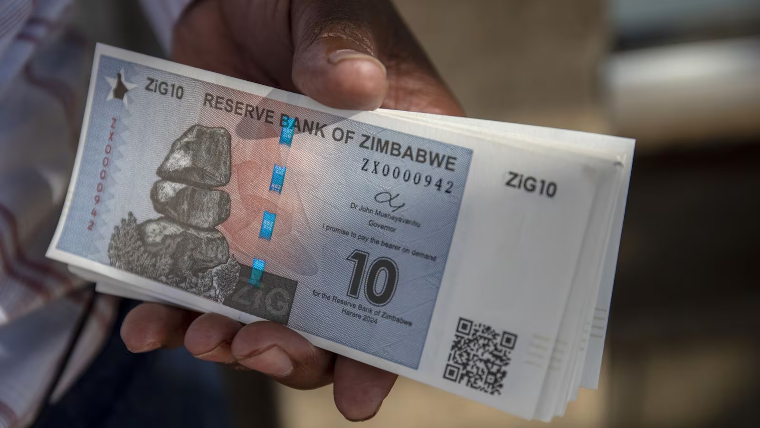 The Zimbabwe government’s insatiable demand for money to satisfy its own needs, which has exceeded tax revenues receipts since 2014, is responsible for the collapse of the local currency including the recently introduced Zimbabwe Gold (ZiG).
The Zimbabwe government’s insatiable demand for money to satisfy its own needs, which has exceeded tax revenues receipts since 2014, is responsible for the collapse of the local currency including the recently introduced Zimbabwe Gold (ZiG).
Market analyst, John Legat of Imara Capital, says the Reserve Bank of Zimbabwe can do its utmost to rein in liquidity but this will not save the local currency as long as the government spends more than it receives.
Tracking the history of the ZiG since it was introduced in April, Legat says if one follows the trajectory of the parallel market, it is possible to explain each lurch down in the rate.
“On launch date the parallel rate stood at around ZWG15-ZWG17 to USD1 where it remained for some while until the public were able to transact in the new currency, largely in electronic form,” he says in his investment notes for October.
“In June it suddenly headed down to ZWG24 to USD1 which followed a decent rise on the ZSE (up 27% in that month alone) which suggested that there were more ZWG in circulation looking for a home.
“With a bit of digging, the consensus at the time was that the road builders had been paid in part in ZWG by the government, or Treasury, likely through the use of the government’s overdraft at the RBZ, which entails money creation.
“With the Financial Intelligence Unit (FIU) and RBZ breathing down everyone’s necks looking at suspicious and large transactions, it makes sense that this money initially found its way onto the Zimbabwe Stock Exchange (ZSE) being a legitimate destination for the funds back in June.
“Some of it also found its way to the formal retailers, especially those supplying building materials, who suddenly experienced increased demand for imported goods paid for with ZWG.
“Road builders ultimately need dollars for road tar though, not ZSE shares or bags of cement, so ultimately the freshly created ZWG ended up in the foreign exchange market. “Bottom line was that the fall from 17 to 24 was not driven by economic saboteurs from the private sector as the media would like to report, but more likely due to Treasury’s overspending that resulted in the creation of ZWG through their overdraft at the RBZ. “Indeed, combing through the monetary statistics availed by the RBZ (the latest being for July) reveal a notable growth in broad money supply (M3) which grew by 19% from
April (ZWG38.8 billion) to July 2024 (ZWG46 billion).
“Using the average formal exchange for the period, this translates to a USD530 million
growth in M3 over four months. During the same period, the portion of FCA deposits in
USD terms was largely unchanged, averaging USD2.5 billion, implying that the growth in the
money supply principally emanated from the ZWG side.
“The RBZ’s reaction was to tighten liquidity by sweeping any surplus ZWG from the banking
system. The banks were therefore unable to lend ZWG to their clients making it hard for
business to fund its working capital. Once again it was just easier for the private sector to use US dollars rather than ZWG.”
Continued next page
(556 VIEWS)

